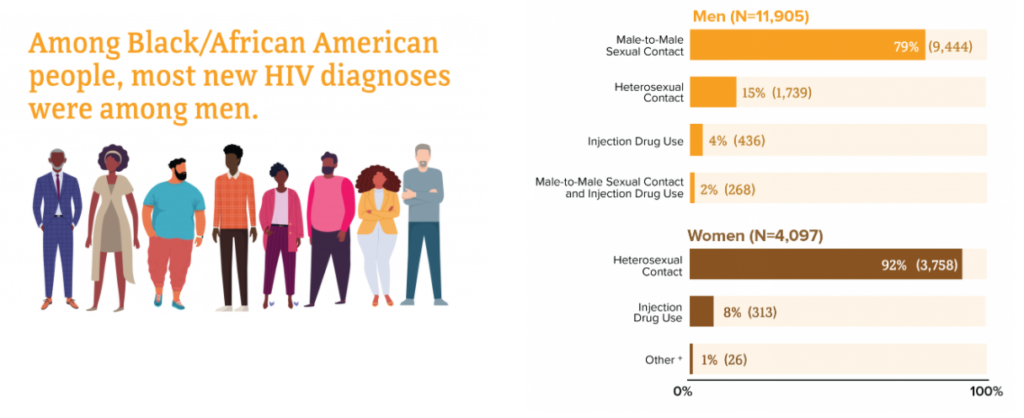Blog
Challenges of Preventing HIV Among African Americans
February 7 is National Black HIV and AIDS Day. Regarding HIV among African Americans, the CDC says, “Black/African American people account for a higher proportion of new HIV diagnoses and people with HIV, compared to other races and ethnicities. In 2018, Black/African American people accounted for 13% of the U.S. population, but 42% (16,002) of the 37,968 new HIV diagnoses in the United States and dependent areas.”

The chart below shows how HIV was transmitted in 2018 by category and sex.

From 2014 to 2018, HIV diagnoses decreased by 7% among African Americans. Reducing HIV diagnoses among most age groups has progressed. Although those ages 25-34 had a 7% increase in HIV diagnoses, all other groups decreased. In 2018, over 6,000 African Americans with HIV in the U.S. and dependent areas have died.
What are the challenges of preventing HIV?
Information provided by the CDC.
- Some African American people with HIV are unaware they have it. People who don’t know they have HIV can’t get the care and treatment they need and may transmit HIV to others without knowing it.
- HIV stigma is common among people with HIV and negatively affects their quality of life. Stigma and fear of discrimination may prevent African American people with HIV from getting the care they need or disclosing their status.
- Racism and discrimination and mistrust in the health care system may influence whether African American people seek or receive HIV prevention services. These issues may also reduce the likelihood of engaging in HIV treatment and care.
- Homophobia can make it difficult for some African American people to be open about risk-taking behaviors, which can increase stress, limit social support, and negatively affect health. These factors may prevent some African American people from accessing HIV prevention and care services.
- African American men and women have higher rates of some sexually transmitted diseases (STDs) than other racial/ethnic communities. Having another STD can increase a person’s chance of getting or transmitting HIV.
- African American people experiencing poverty may find it harder to get HIV prevention and care services. The social and economic issues associated with poverty—including limited access to high-quality health care, housing, and HIV prevention education—directly and indirectly increase the risk for HIV and affect the health of people with and at risk for HIV. These factors may explain why African American people have worse outcomes on the continuum of HIV care, including lower rates of viral suppression.
For more information on HIV among African Americans and how the CDC is working to slow down rates of transmission, visit the CDC.